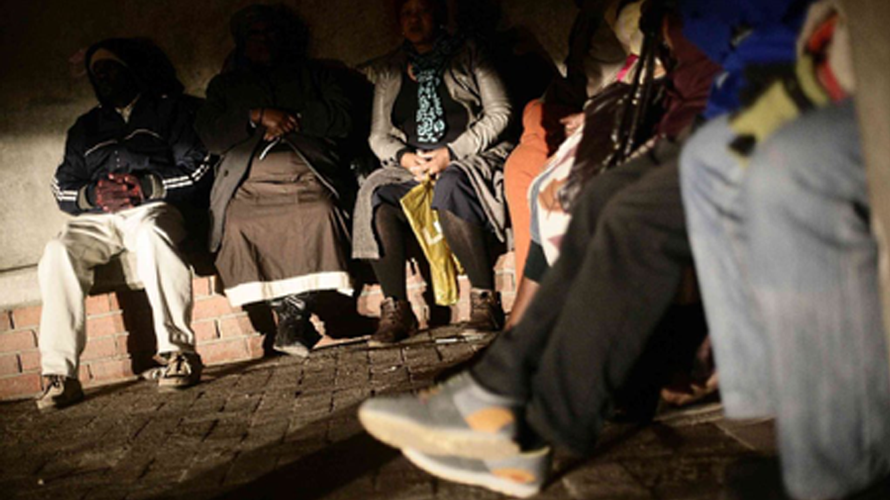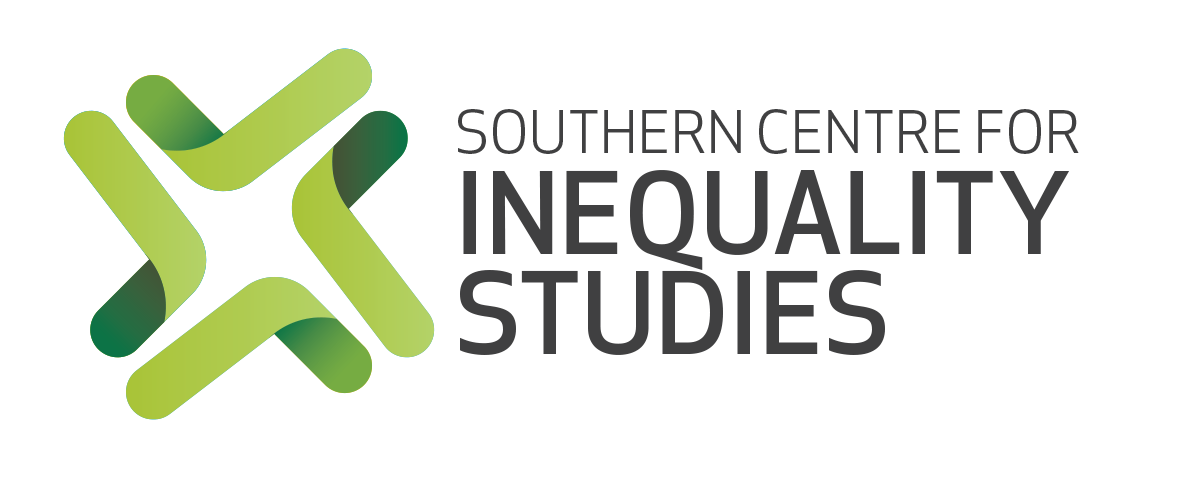What’s health got to do with it?
Compiled by: Arabo K. Ewinyu (SCIS) in collaboration with Selogadi Mampane

Patients waiting outside a clinic waiting medical assistance, groundup.org
Lack of access to healthcare is a reflection of income inequality, among other things and the uneven distribution of health care workers between private and public hospitals in South Africa is an indication of gross inequality, as most highly skilled medical professionals serve a minority of the population who often have medical insurance. Estimates reveal that over 80 per cent of the South African population is uninsured. However, data from the National Department of Health indicate half of all healthcare spending is by the insured 20 per cent of the population. In contrast, uninsured patients rely on public health facilities that are generally overcrowded. This results in patients encountering long waiting periods as patients await service in understaffed facilities.
A common measure of access to health care is the number of health professionals (doctors and nurses) per 1 000 individuals. A quick look at these numbers reveals vast disparities across and within countries or regions. Africa as a whole, for example, has one healthcare worker for approximately 1 000 people, South Africa being no different. This figure falls far short of the set standard of 2.5 health workers per 1 000 individuals that is required to provide basic health care. In South Africa, this variation in the ratio of health workers to the overall population is reflected regionally as wealthier provinces have a greater concentration of medical professional to patient ratio. For example, the Western Cape Province has four times as many doctors per 1 000 people compared to Mpumalanga.
Low incomes and the precarious nature of work often prevent many people from affording private medical insurance. In South Africa, over half the population earns less than R3 500 per month (US$ 191) and 50 per cent of the poorest South Africans have a negative net wealth estimated at R16 000 (US$ 873). This group of individuals is also heavily indebted as their debts outweigh their assets. Labour market research also indicates that many individuals survive by working in the informal sector. By its nature, such employment involves a lack of access to basic worker protection and benefits such as medical insurance.
From the discussion so far, we wish to highlight three areas where socio-economic inequality and the COVID-19 pandemic intersect. Firstly, do patients in the private and public health sector have equal access to COVID-19 diagnostic tests? Between 2 March and 10 May 350 410 tests were undertaken in South Africa. Of these, 53.4 per cent, corresponding to 187 115 tests, were concluded in public sector laboratories. The remaining 163 295 were tested in private laboratories. At first glance, the public sector seems to be testing intensively; however, we ought to remember that over 80 per cent of the total population depends on the public sector for their health care needs, including in this case for COVID-19 tests. Somewhat positively, over the observed period, the share of tests undertaken in the public sector laboratories increased relative to those in the private sector indicating growing capacity in the former laboratories.
Tests are provided free of charge in public laboratories. However, given the urgent need to test and the mounting backlog, it is highly likely that some patients would be forced to consider other testing options to expedite the testing process. In such a case, we envision two likely scenarios. In the first, those individuals that can afford the cost of would shift to private sector laboratories. However, how much does the average test cost? One of the more widely used tests, is produced by Cepheid and costs US$20 (R369). This cost is approximately 10 per cent of the average South African wage placing it out of reach of the majority. In the second scenario, those who cannot afford the costs of tests will avoid testing or continue waiting. Given the dangers of the latter scenario, the Treatment Action Group is advocating for a reduction in the testing costs to US$5 (R90), which is necessary and beneficial in reducing the testing gap. Until then, we could consider ordering kits from Senegal, which is currently at the trial stage of producing their testing kits that cost US$1 (R14) and provide results in less than ten minutes.
Lastly, contrasting those workers that can work from home and those deemed essential is also informative. Estimates for South Africa state that approximately one in four of those employed before lockdown worked in essential industries corresponding to about 4.5 million workers. Such workers are employed in diverse sectors such as agriculture, health, security, food and beverage manufacturing and retail. Essential workers are also present in banking and insurance, mining, taxi and spaza shops (informal retail stores) and in police and national defense forces. By their nature, some of these jobs require workers to be in close proximity with others. These workers are often forced to rely on public transportation and sometimes live in crowded conditions. Additionally, where such essential workers have pre-existing conditions such as high blood pressure, TB and diabetes, they face greater risk of contracting and spreading the virus within their communities and places of employment.
In South Africa, access to health care is highly unequal, primarily along income lines at the individual or provincial level as well as other arising from other factors. Underlying the bid to control the spread of COVID-19 is the need to identify as many individuals that might have contracted the disease and isolate or quarantine them accordingly. Hence, the central role of testing and ensuring that all who require the test have access to it cannot be overstated.
This is the third in a series of blog posts that attempt to highlight the relationship between the COVID-19 pandemic and inequality in South Africa.

